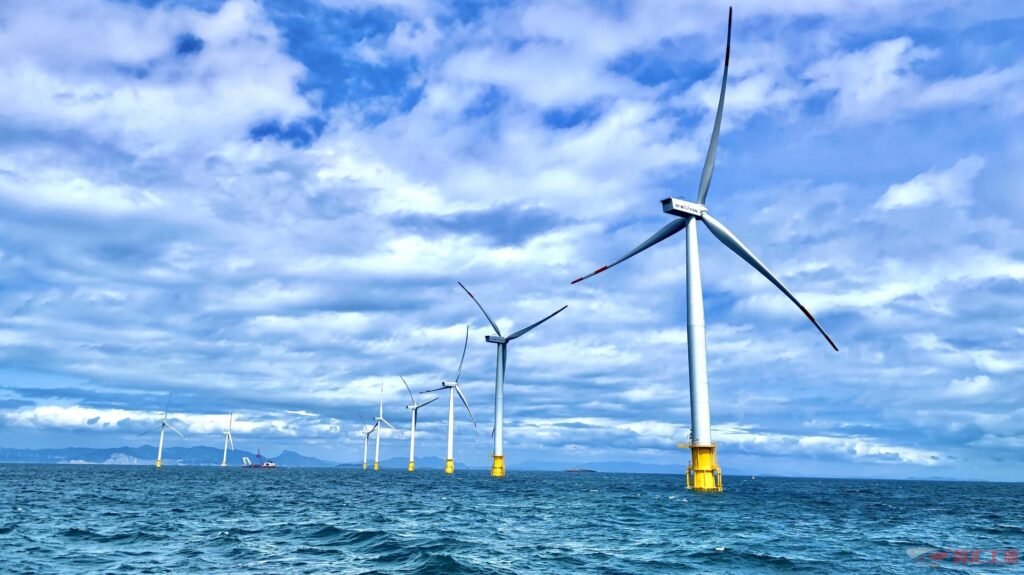A Thriving Force in Renewable Power
Wind energy emerges as a stellar performer in the quest for renewable energy sources, harnessing the invisible forces of moving air to generate electricity. Its environmental benefits are evident, yet beyond eco-friendliness, wind power has gained paramount importance in the global energy sector. A thorough exploration of the myriad forms of wind power and underlying principles supporting this renewable resource is essential to fully comprehend its potential and impact.
Defining Wind Energy:
The Genesis of Aeolian Dynamics
Wind energy is the result of differential heating and cooling on various parts of the Earth’s rough surface. Some regions gain and lose heat faster than others, and air flows across the planet to balance these discrepancies, exactly as hot and cold water currents intermingle in a bathtub. This generated movement of air—that we call wind—is capable of carrying birds across the skies, propelling sailboats across oceans, and, occasionally, uprooting trees. Compared to these, turning the blades of a wind turbine is a breeze! The rotation of these turbines generates electricity.
The Nature of Wind Power:
The Fluid Motion of Air Masses
At its core, wind power is defined by the kinetic energy produced as air masses slice through the atmosphere. This movement, dictated primarily by the differential solar radiation of the Earth’s surface, leads to fluctuations in temperature and pressure, culminating in the generation of airflow. These air currents, when harnessed by modern wind turbines, can be converted to mechanical energy, and subsequently into electricity, offering a clean and sustainable alternative to fossil fuels.

Varieties of Wind Energy:
Onshore Wind Power:
The Growth of Terrestrial Turbines
Onshore wind energy refers to capturing wind using turbines installed on land. With advancements in turbine technology, reductions in costs, and supportive governmental policies, this form of wind energy has grown markedly. Onshore wind farms are usually strategically situated in locations where the wind resource is consistent and strong, maximizing energy output.
Offshore Wind Power:
Potential over the Horizon
Although a more recent development, offshore wind energy holds immense potential. By placing turbines at sea (typically in shallow or deep waters), it addresses issues related to land-based installations, such as land availability and aesthetic concerns. Offshore wind farms benefit from higher, steadier wind speeds, thus increasing efficiency.

Distributed Wind Power:
Localized and Efficient
Distributed wind energy systems employ a decentralized approach by equipping smaller turbines near points of consumption. Suited for rural or remote areas, industrial sites, and even residential settings, these systems provide a localized supply of renewable energy. Distributed wind energy enhances energy resilience and can reduce electricity costs for individuals and communities.
Wind Power Fundamentals:
Wind Resource Assessment:
Understanding the Breezes
Effective utilization of wind as an energy form begins with a thorough understanding of the wind resource at a specific site. Wind resource assessments involve collecting data on wind speeds, directions, and their variation over time. This information guides wind turbine siting, ensuring optimal layouts to maximize energy yield while minimizing environmental impacts.
Turbine Technology:
The Engine of Wind Power
Turbines are essential to every wind energy system. Technology has seen significant advancements, with current turbines boasting larger rotor diameters, higher towers, and improved aerodynamics. These enhancements allow turbines to capture more wind at higher altitudes and across various wind conditions, improving overall efficiency and performance.
Grid Integration:
Balancing the Breeze with Baseload
Integrating wind energy into existing power systems brings opportunities and challenges. The intermittent nature of wind power requires sophisticated grid management solutions to ensure system stability and reliability. Energy storage, smart grid technologies, and demand response are crucial for mitigating fluctuations in wind power output and ensuring seamless integration with traditional power sources.
Conclusion:
In conclusion, as the world zealously seeks cleaner and sustainable energy systems, the emergence of wind power forms a beacon of hope. Understanding its various forms and fundamentals is paramount to harnessing its full potential and reaping benefits. Wind power paves the way for a cleaner, more robust energy future, with land-based wind farms sweeping across the countryside and future offshore installations capturing the power of the open seas. Embracing the limitless potential of wind energy, we can chart a course for a brighter, sustainable future—mitigating climate change, fostering economic growth, enhancing energy security, and ensuring environmental stewardship for generations to come. It is time to set our sails by the transforming winds for a more illumined and enduring tomorrow.












































